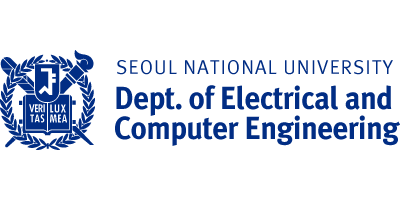Professor Sung-Jae Kim developed a new nanoelectrohydraulic method for concentrating low-concentration substances into high-concentration substances. (The Academic News, 2023.08.16)

From left: Sung-Jae Kim, professor at the Dept. of Electrical and Computer Engineering, Ho-Yeong Kim, professor at the Dept. of Mechanical Engineering, Joo-Won Seo, Ph.D. candidate at the Dept. of Electrical and Computer Engineering, So-Hyun Jeong, Ph.D. at the Dept. of Mechanical Engineering, Ji-Hee Park, Ph.D. at the Dept. of Electrical and Computer Engineering.
On the 16th, Seoul National University College of Engineering (Dean Yu-seok Hong) announced that a collaborative research team consisting of Professor Sung-Jae Kim from the Department of Electrical and Computer Engineering and Professor Ho-Yeong Kim from the Department of Mechanical Engineering has developed a new nanoelectrohydraulic method that concentrates low-concentration substances into high concentrations using fluid penetration due to hierarchical capillary phenomenon in multilayered paper channels.
Ion concentration polarization, a nanoelectrohydroulic phenomenon, involves the phenomenon where ions are polarized near ion-selective membranes when an external voltage is applied. This phenomenon can be utilized to concentrate low-concentration substances rapidly and efficiently within microchannels. Consequently, it holds the potential for applications in fields such as early-stage diagnosis and analysis of biomaterials present in low concentrations.
Cellulose-based paper, being a cost-effective material, finds utility in on-site diagnostics and analyses such as COVID-19 test kits. Its porous structure can be manufactured inexpensively, and it has the capability to suppress eddy flows arising from ion concentration polarization. However, paper-based analytical/detection devices have possessed a limitation where the concentrated substance becomes dispersed, preventing attainment beyond a certain threshold concentration ratio.
The collaborative research team addressed this issue by employing a multilayered paper channel. The team strategically layered multiple sheets of paper to create a multilayered structure, thereby theoretically and experimentally verifying the fluid penetration behavior through hierarchical capillary phenomena. Leveraging this behavior, the team successfully achieved a concentration effect of more than tenfold compared to the concentration effectachievable through a single paper channel.
Professor Sung-Jae Kim stated, "The nanoelectrohydraulic concentration method utilizing paper channels is a cost-effective and highly efficient analytical technique, and this research is expected to contribute to the advancement of on-site diagnostic fields."
Professor Ho-Yeong Kim remarked, "The meticulous examination of fluid penetration behavior driven by hierarchical capillary phenomena within multilayered paper channels, along with the optimized design of paper-based fluid devices derived from such examination and its experimental validation, demonstrates a successful convergence between scientific research and practical applications."
The results of this study have been published in the prestigious international journal in the field of nano science and technology, 'Nano Letters', on the 15th.
Source: https://ee.snu.ac.kr/community/news?bm=v&bbsidx=53869
Translated by: Do-Hyung Kim, English Editor of the Department of Electrical and Computer Engineering, kimdohyung@snu.ac.kr


